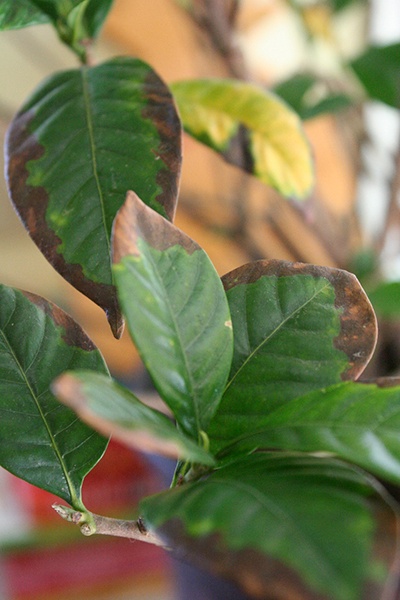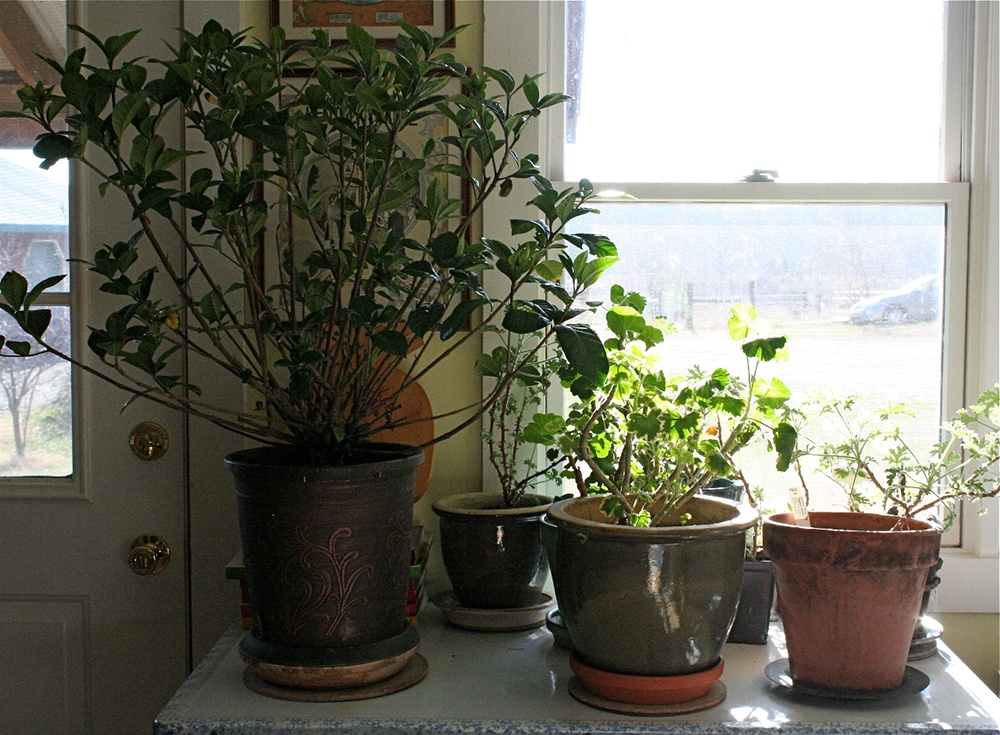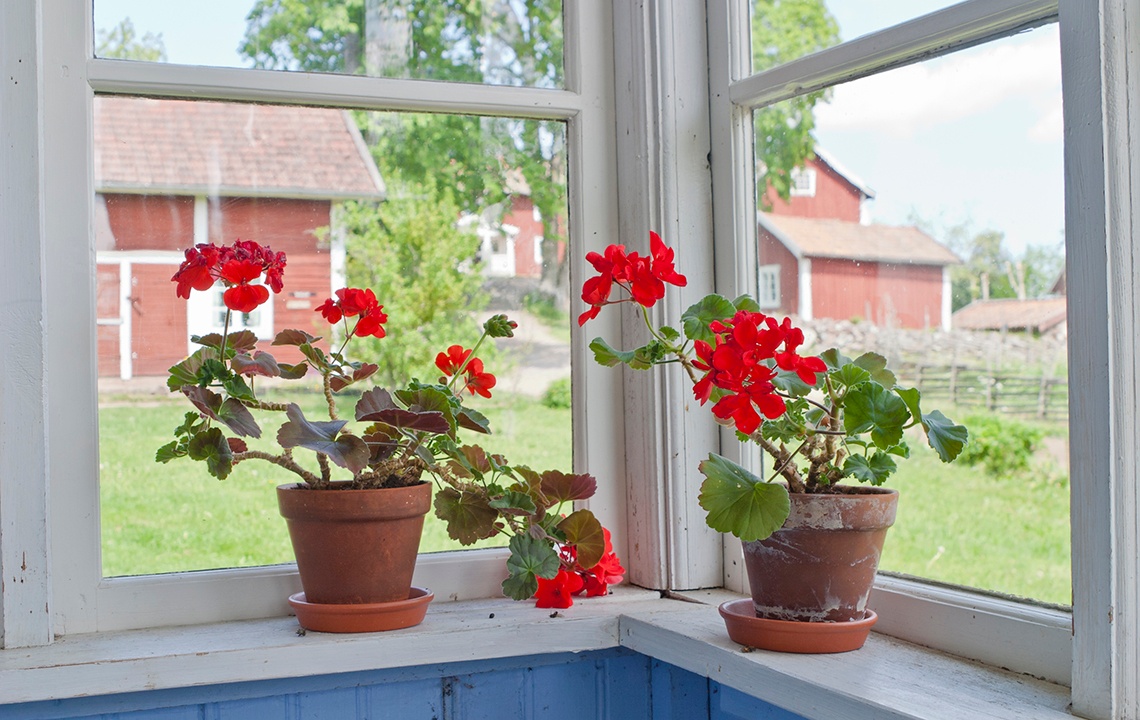If you’ve spent all summer and fall tending to your plants, you don’t want to let them suffer during the winter months. Some of your plants will need to move inside the house until the weather warms up.
 In the fall it can be hard to say goodbye to beloved annuals, herbs or tender perennials. I have this dreamy vision that one day I will have a large kitchen-laundry room-pantry-mudroom with an attached solarium that has long waist-high counter-depth stone troughs in it, just perfect for keeping and watering all manner of plants -- I saw and photographed one like it in an old New Hampshire farmhouse many years ago (complete with a large sleeping porch above it all).
In the fall it can be hard to say goodbye to beloved annuals, herbs or tender perennials. I have this dreamy vision that one day I will have a large kitchen-laundry room-pantry-mudroom with an attached solarium that has long waist-high counter-depth stone troughs in it, just perfect for keeping and watering all manner of plants -- I saw and photographed one like it in an old New Hampshire farmhouse many years ago (complete with a large sleeping porch above it all).
But being more practical, and certainly frugal, these days, I have embraced the reality that I don’t need a fancy attached greenhouse or sunroom. All that is necessary is an interior room that gets a few good hours of winter sun, which is lower and more direct and most beneficial for interior plants, and that doesn’t get much warmer than 65 or 70 degrees average. (If you keep a cooler house as we do in the winter, this usually isn’t a problem—or, if you heat with wood, make sure your plants are far removed from your woodstove or fireplace.) Make sure you also have a few good tables, preferably old wood or enamel-topped (but please don’t use your grandmother’s heirloom dining room table!), or even a nice, preferably long, waterproof countertop.
 While I do not have a lot of indoor space to tend to a great number of plants, I do have a sunny laundry room with a few tables and direct southern exposure. This year I am overwintering some ivy and several scented geranium plants that I got from SelectSeeds.com earlier this year, as well as several more unusual varieties of floral geraniums that I just couldn’t bring myself to toss in the compost heap. I also have a large potted red hibiscus that I’ve hauled in for the past three winters and set up on the floor and a gardenia which I hope will make it through the winter intact (I have not had great luck with gardenia plants). (Throughout the summer I save the hibiscus flowers and dry them for teas and punch—they are edible if you use organic food-grade fertilizer. Meanwhile, the scented geranium leaves are wonderful in cakes.)
While I do not have a lot of indoor space to tend to a great number of plants, I do have a sunny laundry room with a few tables and direct southern exposure. This year I am overwintering some ivy and several scented geranium plants that I got from SelectSeeds.com earlier this year, as well as several more unusual varieties of floral geraniums that I just couldn’t bring myself to toss in the compost heap. I also have a large potted red hibiscus that I’ve hauled in for the past three winters and set up on the floor and a gardenia which I hope will make it through the winter intact (I have not had great luck with gardenia plants). (Throughout the summer I save the hibiscus flowers and dry them for teas and punch—they are edible if you use organic food-grade fertilizer. Meanwhile, the scented geranium leaves are wonderful in cakes.)
Because all plants require a relative dormant period each year you want to simulate a modified winter in your house. In other words, while keeping your room not terribly warm (50s or low 60s average is also just fine, as long as there is good sunlight for a part of each day), you don’t need to feed or overwater your plants. Put enough water in each pot, about once a week “or so” (I’ve gone two weeks sometimes, too), to nourish the roots but not over-saturate them. This will protect your tables as much as the plants. Make sure you place saucers or dishes under each plant, or trays, and then place them onto cork disks or other buffers to protect your tables.
Throughout the “winter” some of your plants might look as if they are failing to thrive but don’t despair: as long as they are getting sufficient water and light and aren’t too hot they will be just fine. They’re just ‘resting’! If any leaves brown or shrivel up—as geraniums and hibiscus leaves will do any way—just remove them. [My hibiscus goes completely dormant with only a few leaves on it.] If you want to make sure that your plant is alive, or ‘wick’ as they say in Yorkshire, England (think of The Secret Garden), just break a small branch and you can see the green and healthy plant beneath.
One other point: some indoor plants can attract aphids and other pests. I’ve found the best surefire treatment for any pesky plant critters is to take a tablespoon or so of some peppermint or lavender castile soap (Dr. Bronner’s works well), put it in a spray bottle with warm water (not too hot, not too cold), shake and spray weekly or topically as needed. This will not damage the plant or affect its edible quality if a culinary herb. (There are likely many other tried and true methods online, too.)
In mid-March slowly wake your plants again by watering them a bit more and feeding every two weeks with a fish emulsion or organic fertilizer mixed in water, according to the instructions (Miracle Grow even has an organic variety now). If you don’t feed them that’s fine but do give them more water now. After the last frost date, or even before if not too tender and kept on a warm sunny porch, you will have thriving plants ready to be outdoors again for another outdoor growing season ahead.
The benefit of making room for plants indoors is that throughout the winter you can enjoy fresh herbs for your kitchen and in the spring you can take cuttings from your geraniums to root and make more plants. I also find that the added bonus of lovely smelling herbs in my home is an easy anti-depressive midwinter tonic.
 The author keeps her plants near a sunny window. / This and middle photo courtesy of Catherine Pond
The author keeps her plants near a sunny window. / This and middle photo courtesy of Catherine Pond
Now, if anyone knows how to keep a gardenia alive, thriving and even blooming throughout the winter months, I’m all ears and would be forever grateful. Nothing wards off the blues and blahs like the scent of a tropical gardenia flower! As the English Christmas carol asks, “Whence comes this fragrance all pervading, scenting the air like flowers in May?

























